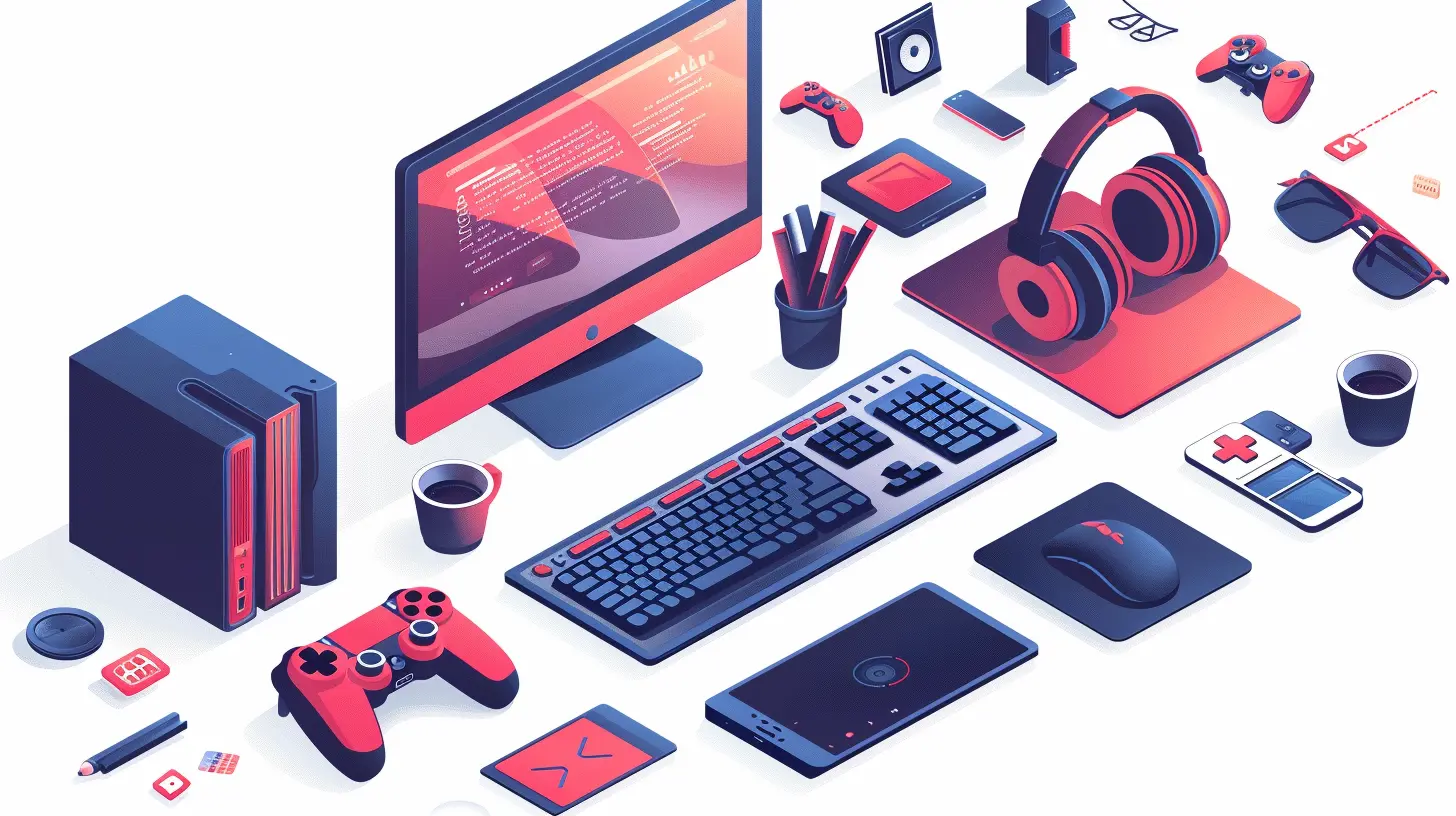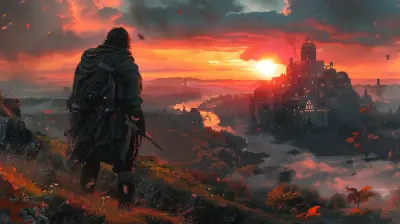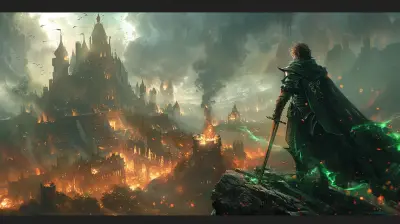How to Build a Strong Game Development Portfolio to Land a Job
29 August 2025
So, you’ve got big dreams of breaking into the game development industry, huh? Awesome choice! Whether you’re aiming to design jaw-dropping worlds, code the smoothest mechanics, or create killer character art, there’s one thing you absolutely need to make those dreams come true: a killer game development portfolio.
Think of your portfolio as your golden ticket. It’s what hiring managers, recruiters, and studios will use to measure your skills, creativity, and potential. A mediocre portfolio? That’s like showing up to a sword fight with a butter knife—it’s just not going to cut it.
But hey, don’t stress! I’ve got your back. This guide is going to walk you through everything you need to know about building a portfolio that kicks butt and lands you that job.
Why Having a Strong Game Development Portfolio Matters
Let’s get real for a second. The gaming industry is no joke. It’s competitive, fast-paced, and there are a ton of people itching to snag the same spot you’re after. So how can you stand out?Your skills? Sure.
Your experience? Maybe.
But your portfolio? Oh, that’s the big one.
Think of it as your game demo. If you can’t wow employers here, you’re probably not getting a callback. Studios want to see proof that you can bring value to their team. They don’t have time to gamble on someone who just says they’re good. They want receipts, and your portfolio is exactly that.
Now that we’ve established why this little collection of work is like your Excalibur, let’s dive into how you can build one that makes jaws drop.
Step 1: Decide Your Niche (Because Nobody Likes a Jack-of-All-Trades)
First thing’s first—what type of game developer are you?Are you obsessed with bringing characters to life with 3D modeling? Or maybe you’d rather spend hours tweaking game physics until they’re just… chef’s kiss perfect? Whether it’s programming, animation, level design, or something else entirely, you need to PICK YOUR LANE.
Why? Because employers want specialists. They’re not looking for someone who has dabbled in five different things. They want someone who’s gone deep in one specific area and is damn good at it.
> Pro Tip: Don’t panic if you’re interested in more than one area. Early on, you can experiment with different skills. But when you're building your portfolio, focus on showcasing your absolute strongest work in one niche. 
Step 2: Build Projects That Scream “Hire Me!”
Alright, this is where the magic happens. Your portfolio needs projects, but not just any projects. You need stuff that’s original, polished, and shows off your skills. This isn’t the time for half-baked ideas or scrappy work you rushed through in a weekend.Here’s the trick: quality over quantity. It's better to have three amazing, polished projects than ten that kinda suck.
Types of Projects to Include:
1. Solo Projects- Created a badass platformer on your own? Add it.
- Developed a mobile game while experimenting with Unity? That’s portfolio gold.
2. Team Projects
Collaborating on projects shows you can work well in a team—something studios love. Highlight your specific role so recruiters know exactly what YOU contributed.
3. Game Jams
Participating in game jams? Perfect. They show you can deliver under pressure and think creatively with limited resources. Just make sure the end result shines.
4. Fan Works (But Be Careful)
Recreated a level from your favorite game? Awesome. Just make sure to credit the original IP upfront. 
Step 3: Show the Process, Not Just the Product
Sure, the final project is important, but don’t skip over the juicy behind-the-scenes stuff! Studios love to see how you got from idea to final product.Break it down:
- Sketches, wireframes, prototypes? Show those.
- Ran into a gnarly bug while coding? Explain what went wrong and how you fixed it.
- Iterated on your original idea because it wasn’t working out? Perfect—write about that problem-solving process.
This not only shows your technical skills but also proves you’re a thoughtful, adaptable game developer. Plus, who doesn’t love a good “before and after” transformation?
Step 4: Craft a Portfolio Website That Doesn’t Suck
Let’s be real—nobody wants to click through a mess of links and awkwardly formatted work. If your portfolio is hard to navigate, guess what? Hiring managers will bail faster than I would in an underwater level.You need a portfolio website that’s:
- Clean and Simple: No over-the-top designs. Keep it professional and functional.
- Organized by Projects: Create separate pages for each project with detailed descriptions, videos, and screenshots.
- Mobile-Friendly: Yeah, people check these things on their phones. Don’t make them zoom in and squint.
Platforms like WordPress, Squarespace, and Wix are no-brainers for getting started. If you’re feeling fancy, you can even code your own site—especially if you’re a coder.
Step 5: Write Case Studies That Grab Attention
Okay, let’s talk about the nitty-gritty. Each project in your portfolio should have a structured case study. Don’t just throw up a screenshot and call it a day.Here’s a simple structure you can follow for case studies:
1. Introduction:
What’s this project about? What was the goal?
2. Your Role:
Explain YOUR specific contributions, whether it’s concept art, coding mechanics, or sound design.
3. Tools/Tech Used:
Unity? Unreal Engine? Blender? Display your technical range.
4. Challenges & Solutions:
Hit a roadblock? Awesome. Talk about how you overcame it. Problem-solving is a core skill in game dev.
5. Outcome:
Wrap it up with the final result. Embed a gameplay video or screenshots. Bonus points for adding metrics if applicable (e.g., “This game has 1,000+ downloads on itch.io”).
Step 6: Polish Your Portfolio Like You’re On a Boss Fight
Your portfolio is done? Cool, time for the polishing phase! This is the part where you go back and tweak every little detail until it’s as close to perfect as possible.Here's a checklist for you:
- Grammar & Spelling: Typos are a no-go. Spellcheck EVERYTHING.
- Consistency: Use a uniform format, font, and tone across the site.
- Links Work: Test every single link. Nothing screams “unprofessional” like a broken link.
Bonus Tips: Stand Out From the Crowd
You’ve made it this far—kudos! But if you REALLY want to stand out, here are a few extra strategies:1. Personal Branding:
Add a unique touch to your portfolio. Maybe it’s a quirky logo or a short bio that highlights your personality. People hire people, not robots.
2. Interactive Portfolio:
If you’re a coder, turn your portfolio itself into a mini-game. It's risky but could totally pay off!
3. Network Like a Pro:
Share your portfolio on LinkedIn, Discord game dev communities, and Reddit. Connections can be a game-changer.
4. Keep It Updated:
Don’t let your portfolio sit there collecting dust. Add new projects regularly and refine older ones.
Mistakes to Avoid (Because We All Hate Failing the Same Mission Twice)
- Using Stolen Assets: Do NOT claim work that isn’t yours. You’ll get caught, and it’ll ruin your rep.- Overloading Your Portfolio: Too many projects can overwhelm and distract.
- Ignoring Feedback: Ask peers, mentors, or even online communities to review your portfolio. Constructive criticism is your best friend.
Final Thoughts
Building a strong game development portfolio isn’t rocket science, but it does take effort and a whole lot of polish. Approach it like crafting a video game boss fight: meticulously design every element to leave a lasting impression.The key? Stay focused, show off your best work, and keep improving over time. Trust me, with a solid portfolio under your belt, you’ll be leveling up into your dream job before you know it.
all images in this post were generated using AI tools
Category:
Game DevelopmentAuthor:

Greyson McVeigh
Discussion
rate this article
1 comments
Alisha Wilcox
Great insights! A well-curated portfolio not only showcases your technical skills but also highlights your creativity and problem-solving abilities. Tailoring projects to your target job is key to standing out!
September 27, 2025 at 2:50 PM

Greyson McVeigh
Thank you! I'm glad you found the insights valuable. Tailoring your portfolio truly makes a difference in showcasing your unique strengths!


